Sheet Metal Screws: Your Complete Guide for Optimal Fastening Solutions at PENCOM Discover the features, applications, and nuances of PENCOM’s high-quality sheet metal screws. This in-depth guide is designed for manufacturers, engineers, HVAC specialists, metal fabricators, and DIY enthusiasts seeking the right fasteners for strong, reliable, and long-lasting sheet metal projects.
Understanding Key Types and Their Ideal Applications
Type B
Designed for use in pre-drilled holes, these screws excel when joining sheet metal to softer substrates (the underlying material onto which the screw is fastened, such as wood, plastic, or other composite materials). The blunt point minimizes splitting in the substrate, and the threads, which are finer compared to other common thread profiles, create a strong, secure grip for a robust connection.
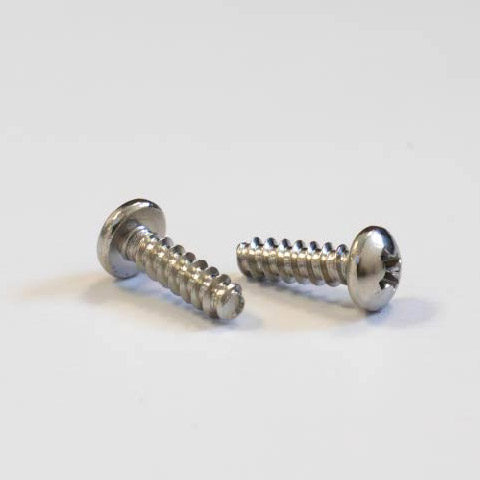
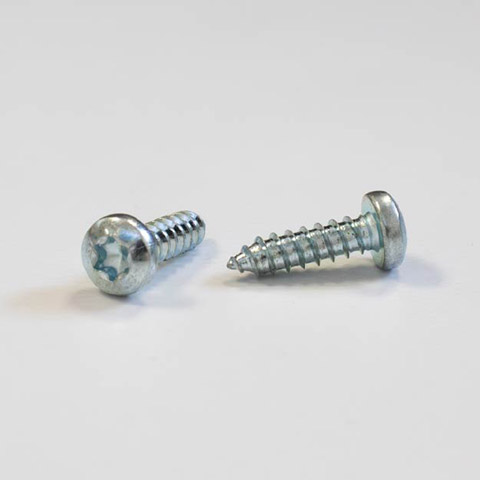
Type AB
This versatile hybrid combines a sharp, sheet-metal-piercing point with finer thread spacing similar to Type B screws, demonstrating good performance in both sheet metal and softer substrates, streamlining your fastener inventory. Unlike screws with a cutting feature like TEK’s, Type AB screws are better suited for thin gauge sheet metal without a cutting point.
Type TA
Thread-rolling screws designed for applications in thinner gauge sheet metal and softer metals with pre-formed holes. The blunt point displaces material, while the specialized thread form reduces driving torque while maximizing pull-out and vibration resistance.
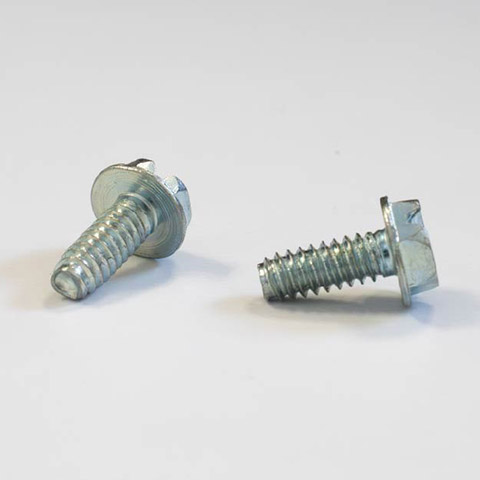
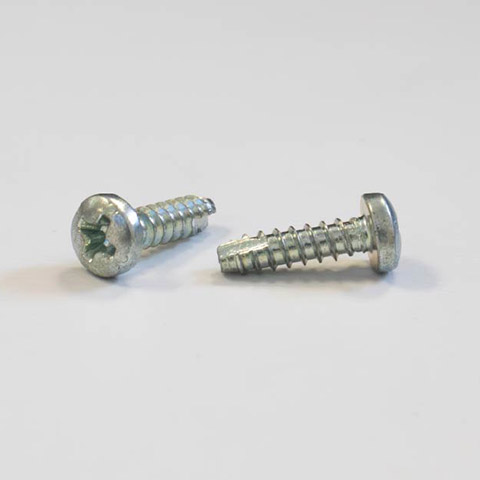
Type 25
A thread-cutting screw with a wide threading design, ideal for plastic materials. Its unique thread design allows it to cut into the substrate, creating a secure fit without causing material splitting. Type 25 screws are particularly effective for fastening softer plastics or other materials where traditional thread-forming screws might strip the material or not hold securely.
TEK Screws
The heavy-duty solution for demanding sheet metal fastening scenarios. A specialized drill-like point allows TEK screws to cut their own pilot hole before forming or cutting threads, conquering thicker gauge metals, harder substrates, and situations where pre-drilling would be impractical due to the additional time and effort required, especially in high-volume or tight-space applications.
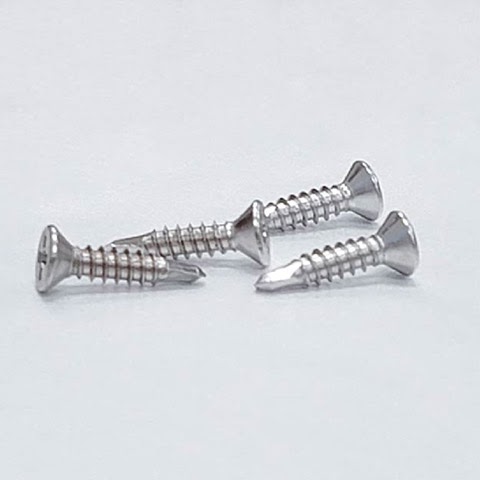
Choosing the Right PENCOM Screw: Factors for Optimal Fastening in Manufacturing
- Base Material: The type and thickness of sheet metal are paramount in screw selection. TEK screws or a self-drilling Type AB often perform best in thicker gauges, while Type TA excels in thinner sheet materials. Analyze any pre-drilled holes, ensuring they are appropriately sized for Type B screws.
- Joint Strength & Stress Analysis: Evaluate the holding power, shear strength, and vibration resistance requirements of your specific manufacturing application. Consider the forces the joint will experience, helping you determine the most suitable fastener type for the task.
- Environment & Corrosion: Exposure to moisture, corrosive chemicals, or harsh environments necessitates the use of screws available in stainless steel for maximum longevity and rust prevention. PENCOM’s zinc-plated steel screws offer good corrosion resistance for many indoor applications, providing a range of choices to meet budget and environmental needs.
Head Styles: Matching Function to Form
- Pan Head: The reliable all-rounder, suitable for most general-purpose sheet metal fastening applications where a slightly protruding head is acceptable.
- Flat (Countersunk) Head: Creates a flush or slightly recessed surface with the sheet metal, important for both aesthetic reasons and to prevent any snagging on the protruding screw head in manufacturing environments.
- Truss Head: Ideal for thin sheet metal, the extra-wide bearing surface of this head style distributes clamping force over a larger area, minimizing the risk of the fastener pulling through.
- Hex Washer Head: Provides both increased clamping force and potential sealing capability. The hexagonal head design allows for high-torque fastening applications without the risk of cam-out for efficient and powerful installations.
Thread Rolling
Advantages:
- Strength: Rolling forms threads by pushing and reshaping the material, which aligns the grain flow of the metal along the contours of the threads. This increases the tensile strength and fatigue resistance of the screw.
- Surface Finish: Thread rolling typically results in a smooth, high-quality finish, which can provide better engagement with the mating thread.
- No Material Loss: Since material is not removed but rather displaced, there’s no loss of material, making it a more material-efficient process.
- Speed: Thread rolling can be faster than cutting, especially for high-volume production, because it involves less resistance and therefore can be completed in fewer passes.
Disadvantages:
- Material Limitations: Not all materials can be easily rolled, particularly if they are very hard or brittle. The process is most effective with ductile materials.
- Equipment Cost: The initial setup and tooling costs for thread rolling can be higher than for cutting, although this can be offset by lower per-piece costs in high volume.
Thread Cutting
Advantages:
- Versatility: Thread cutting is more versatile and can be used on a wider range of materials, including both softer and very hard metals.
- Precision: Cutting tools can be adjusted to produce highly precise thread dimensions and can be used to create a wide variety of thread profiles.
- Customization: It’s easier to produce customized or specialized thread shapes with cutting, as each tool can be ground to the specific profile needed.
Disadvantages:
- Material Waste: Unlike rolling, cutting removes material to form the thread, which can result in material waste.
- Surface Integrity: Cutting threads can introduce stress risers and microscopic cracks in the material, potentially weakening the screw compared to a rolled thread.
- Speed: Cutting threads generally takes longer than rolling, as material removal can require multiple passes and slower feed rates to achieve the desired precision.
Application
The choice between thread rolling and thread cutting for sheet metal screws often depends on the application, material, required strength, and production volume. For instance, thread rolling might be preferred for high-volume production of strong, durable screws in ductile materials, while thread cutting might be chosen for specialized screws in harder materials or when precise customization of the thread profile is required.
PENCOM’s Drive Options: Power vs. Precision
- Phillips: The most common drive style, but correct bit sizing and steady, firm pressure are crucial to avoid cam-out, which is the slipping of a screwdriver bit out of the screw head, often causing damage to the screw head or bit.
- Hex: Allows you to apply greater torque without slippage, making hex-head screws ideal for power driving or high-torque applications.
- Square: Offers superb engagement between bit and screw, reducing cam-outs. Square drive screws are becoming increasingly popular for fastening sheet metal.
- Six-Lobe: Known for its tamper-resistant design, the Six-Lobe drive offers precise engagement and increased torque control, making it an excellent choice for applications requiring a high degree of security and efficiency.
Need Expert Advice or Custom Parts? We’re Here to Help! Contact us for personalized recommendations on the best PENCOM sheet metal screws for your project – we’ll gladly help you ensure lasting success. Get in touch with our experts today
